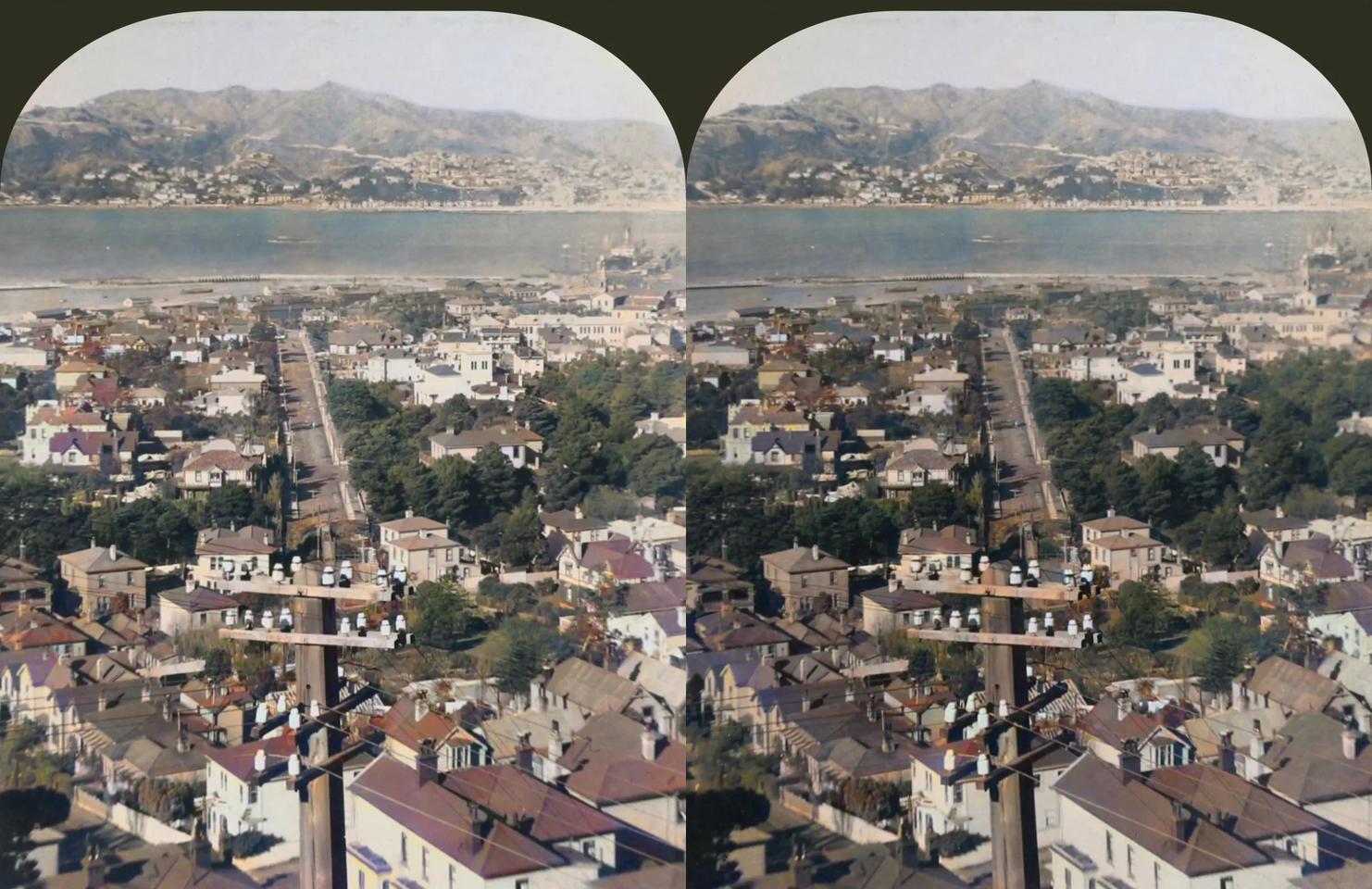

'Wellington, New Zealand. A bird’s-eye view from Queens Park, Thorndon, showing the Harbour and Oriental Bay' 1906
by Stereoscopic Society of New Zealand 2022-01-28 19:56
Cleaned up and colourised image (Photoshop and/or AI websites).
Wellington, New Zealand. A bird’s-eye view from Queens Park, Thorndon, showing the Harbour and Oriental Bay,” Monash Collections Online, accessed January 25, 2022, https://repository.monash.edu/items/show/14150.
Copyright George Rose.
You can ‘freeview’ this picture - glasses free 3D. Click on the image and select ‘cross view’. Here’s a quick how-to: https://www.newzealand3d.net/newbies-page.
On the back of the stereocard:
'Looking southwards from the Queen’s Park, Wellington, a very fine panoramic view is to be had of the whole of the city and the surrounding hill suburbs. The signal station is situated on the highest point of the mountain range, in the background, known as Mount Victoria, at the foot of which, to the left, is Oriental Bay, a very pretty residential quarter, connected with the city by electric trams. From a point about the centre of the view (on the city side of the harbour), and extending to the right, is Clyde Quay, along which the tramway is laid. From the quay access is had to the Te Aro Baths and small boat dock. The splendidly equipped and commodious wharves, of which Wellington is justly proud, are further to the right, but a portion of the northern wharf, known as the Glasgow, is here seen, reaching from which (to the left) is a long, retaining wall, enclosing an area vested in the Harbour Board for further reclamation. From the Glasgow Wharf, crossing the view to the left, is Waterloo Quay, and from this (continuing to the left) runs Thorndon Esplanade. The Thorndon end of the city, which occupies a prominent position in the view, is the oldest-established part, and is noteworthy for its prettily-laid-out private gardens, and the pleasant relief afforded to the eye by the ornamental trees and shrubs planted in the grounds of its many fine residences. At the upper end of Hobson-street - which divides the foreground - is to be seen a suspension foot-bridge, spanning a deep, thickly-wooded gully, said to have been formed by an earthquake in the early days. Wellington’s population, which is a rapidly growing one, was, in 1906, estimated at 62,844'
